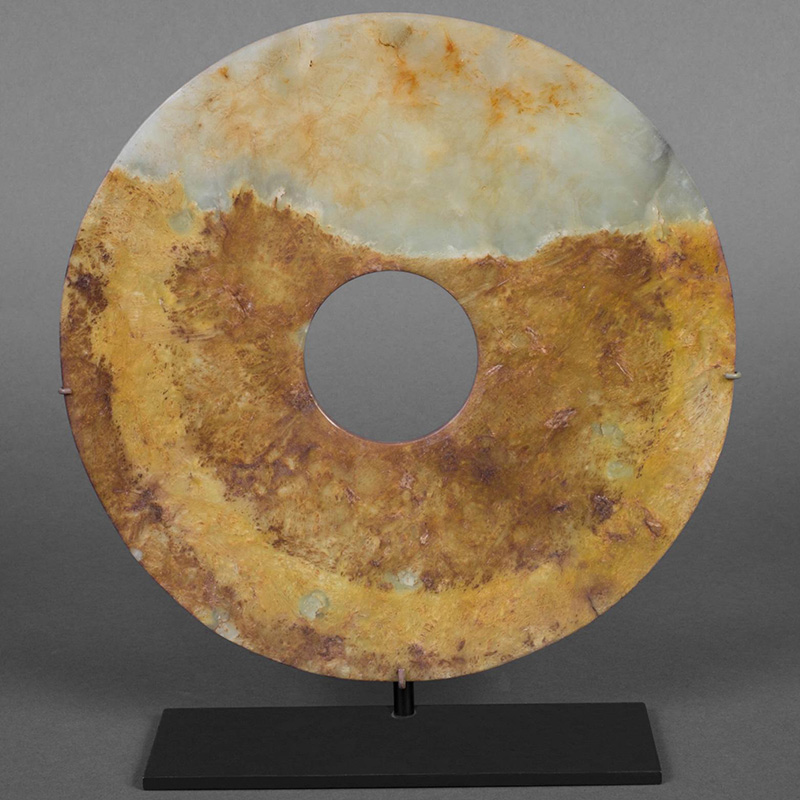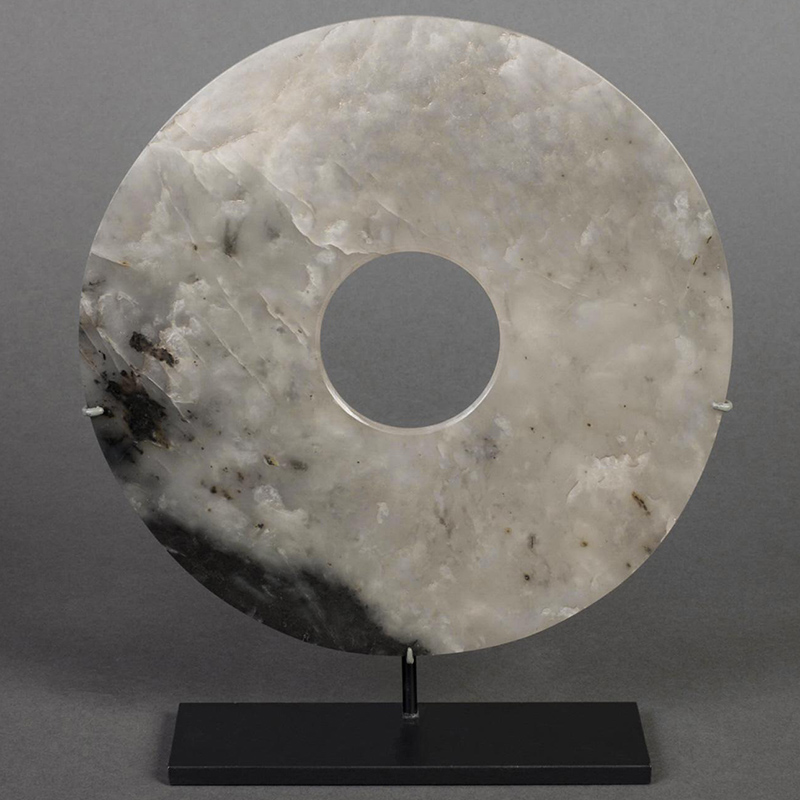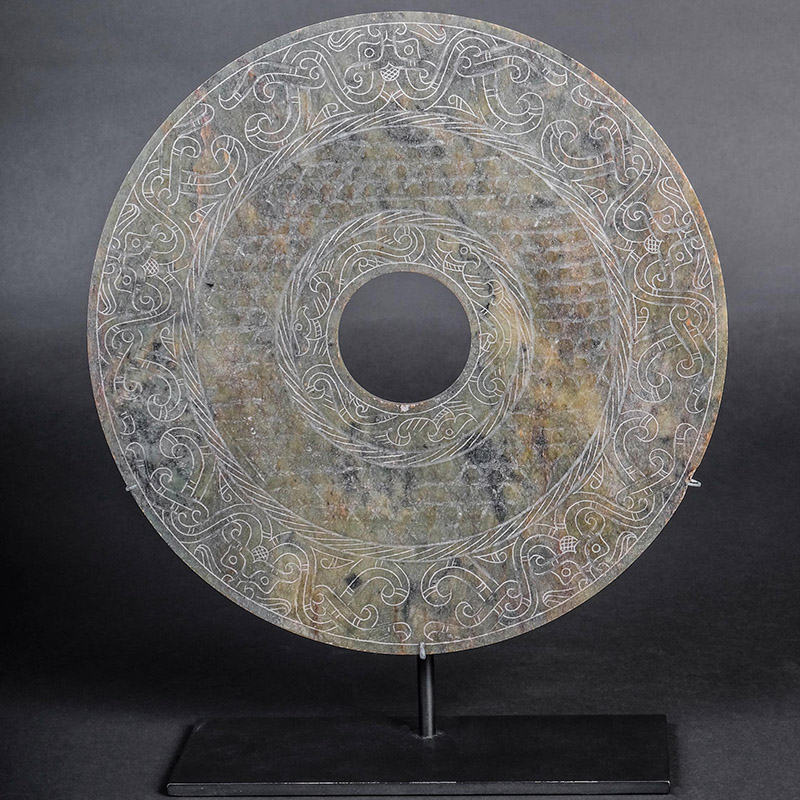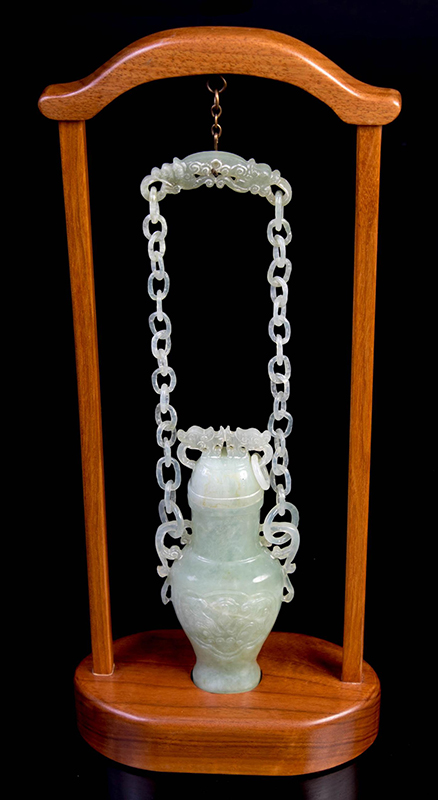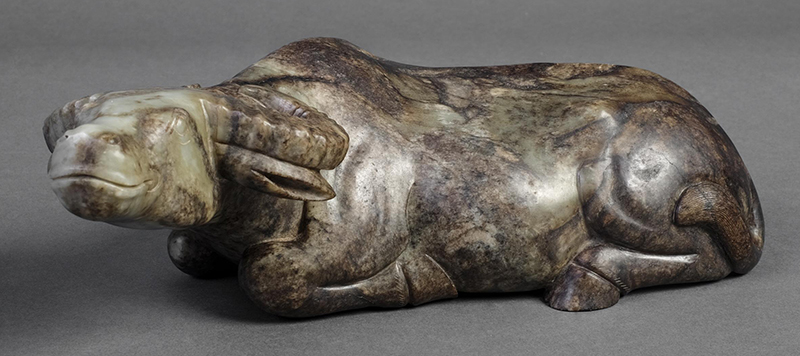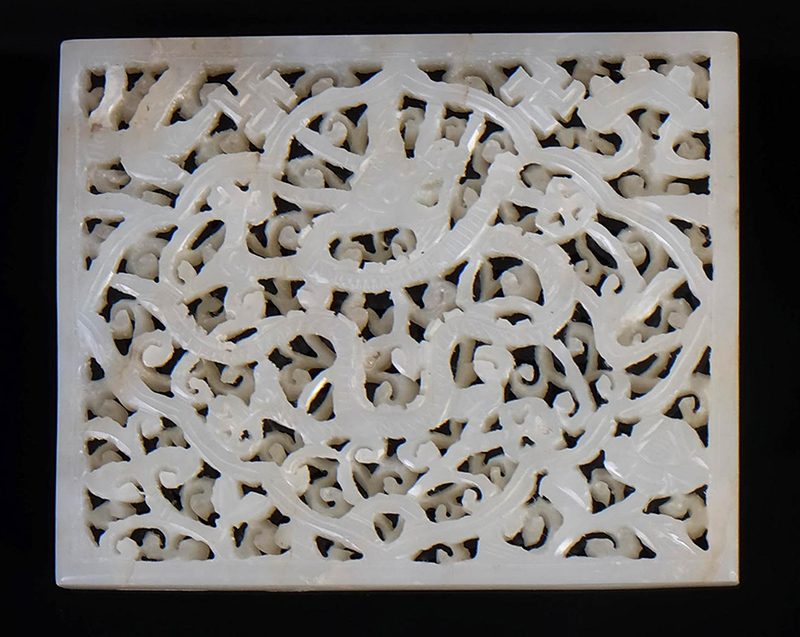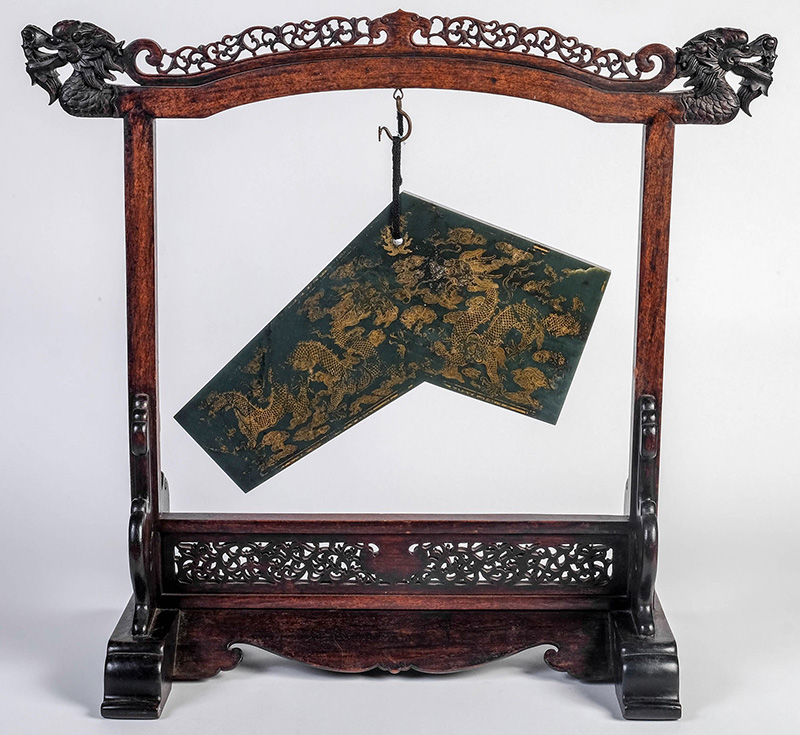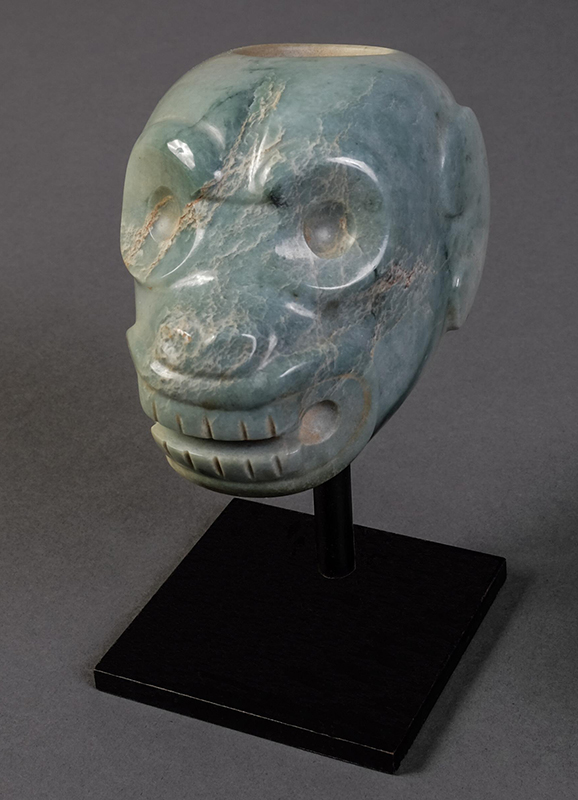The Art of Jade: An Exhibition at the Flint Institute of Arts
by John-Duane Kingsley
The Art of Jade on display at the Flint Institute of Arts from August 15, 2020, through May 23, 2021, provides an intercontinent overview of jade’s cultural significance and craftsmanship in Mesoamerica and China. The exhibit comprises 75 objects dating from 3200 BCE to the 21st century and illustrates jade’s endurance as a precious commodity and symbol of status used for religion, decorative sculpture, and personal adornment.
The Mesoamerican jade pieces predominately date from the Olmec civilization that lasted from 1600 BCE to 350 BCE and lived along the Mexican Gulf Coast. The Chinese jade dates from c. 2100–1600 BCE to the 20th century. This broader span of the Chinese jade’s inclusion illustrates an evolution in craftsmanship ranging from the simplistic circular funerary disks known as Bi from c. 2100–1600 BCE (figure 1) to the Hanging Vase from the 20th century (figure 2) that features an interlocking chain carved from a single piece of jade thanks to the use of an electric drill.
Figure 1. Bi circular funerary disks. Bi, c. 2100-1600 BCE, Chinese. Jade. Gift of Barry Fitzmorris, FIA 2011.253.
Two examples of Chinese jade emerge as representative of jade’s vastly different range in terms of potential forms and colors. The first is a Reclining Ox carved in the Ming Dynasty (1368-1644) (figure 3). The recumbent ox was a popular figure in Chinese culture, valued for its immense strength and patient repose. The medium of jade captures these characteristics superbly, as the heft of the jade mirrors the physicality of the animal. The stone’s variegations are well suited to the contours of the animal’s figure and imagined markings, thus allowing the eye to traverse the full form and marvel at the richness of color throughout.
In contrast, an Openwork Plaque carved during the Quing Dynasty (1644-1911/12) (figure 4) highlights the stone’s versatility as an example of jade’s opacity and delicate subtlety. Rendered in white jade, called Yangzhiyu, it is characterized by its resemblance to “fresh mutton fat” due to its opacity. The openwork design of the piece used to carve the swirling ornamental vegetation captures this translucency by undercutting the pattern allowing light to shine directly through. Because jade registers as a seven on the Mohs Scale of Hardness (with ten being the hardest), creating this piece required tremendous skill to exert force great enough to render the delicate carvings without breaking through the stone.
Aside from the physical properties of jade, it was a surprise to learn that jade also has musical properties. Chimes made from jade, like the Dragon in Cloud Chime from 1765, are called yu-quing. Given the expense of rarity and prestige of the object, chimes made from jade were typically played for the imperial court during religious ceremonies or feasts. The use of green jade and the decoration of imperial dragons suggests that this chime was part of a set used by Emperor Quianlong. To hear the chime in action, click here for an audio recording.
Because the Mesoamerican jade dates from the Olmec civilization, it provides a more concentrated examination into a finite period of history. The majority of the figures included are totemic animal figures indigenous to the Mexican Gulf coast like frogs, monkeys, and turtles. Monkeys were associated with divinity as their ability to climb high into trees placed them close to sky. In Costa Rica, only people descended from the monkey and jaguar clans could hold positions of power as chiefs or religious leaders. Leaders descended from these clans often used monkey themed iconography like this Jade Monkey Mace Head (c. 600–900 CE) (figure 5) as a symbol of authority.
To this reviewer, the Chinese jade struck a more resonant note because of the broader span of history included in that section of the exhibit, and the diversity of forms. A brief vocabulary guide at the start of the exhibit notes key terms focusing on the materiality of jade: the mineral distinctions between Jade and Jadeite; and the chemical factors that contribute to the different colorations found in jade. This resource provides a helpful framework for identifying the various properties of jade pieces throughout the exhibit. Overall, the exhibit would benefit from a greater comparative analysis between the two cultures, their varying iterations of jade carving and technique, and cultural background that informed their different styles.
John-Duane Kingsley is a new contributing writer to The Decorative Arts Trust Bulletin. You can read more of his work at www.dandycraft.org.
About The Decorative Arts Trust Bulletin
Formerly known as the "blog,” the Bulletin features new research and scholarship, travelogues, book reviews, and museum and gallery exhibitions. The Bulletin complements The Magazine of the Decorative Arts Trust, our biannual members publication.








